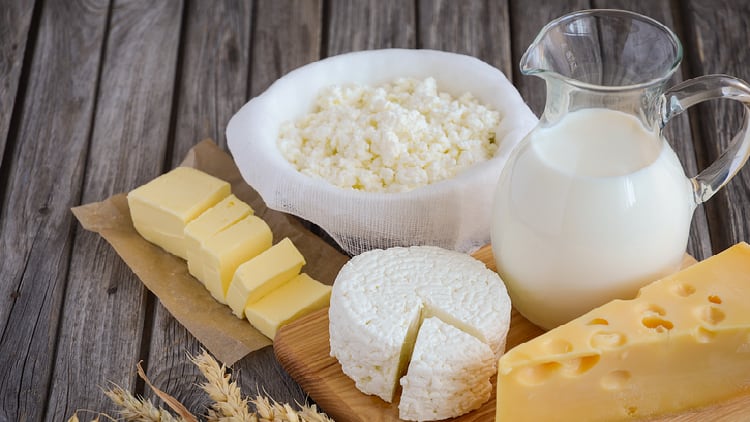Sustainable nutrition and alternative proteins have been top-of-mind topics of the current century.
However, the nutritional advantages of a diet composed of plant-based alternatives (PBA) compared to one comprising animal-based proteins remains an area where more research is required.
An observational study supported by Singapore Institute of Food and Biotechnology Innovation (SIFBI), A*STAR, modelled the replacement of animal-based proteins with PBA to analyse specific changes in the intake of major nutrients.
This study took place at SIFBI’s Clinical Nutrition Research Centre (CNRC), and involved 50 participants (19 men and 31 women) between the age of 21 and 99 years.
The participants were non-vegetarians, of Chinese, Indian and Malay ethnicities, and had been residing in Singapore for at least a year.
They were asked to record their food and drink intake in detail for three weekdays and one day over the weekend, which generated the nutrient profiles for each individual.
An analysis of the food records showed that 22.9% of the study population’s dietary intake (by weight) consisted of meat, dairy and seafood, which were substituted gram-for-gram with PBA.
The original and replaced nutrient profiles were then compared against each other.
It was found that replacing sources of animal proteins with PBA proteins resulted in a 22.2% reduction in protein, 16.8% reduction in fat, 7.5% increase in carbohydrate, and a 71.2% increase in fibre.
In terms of specific fat types, there was a 30.3% and 16.8% reduction in saturated fat and total fat intake respectively. The increase in carbohydrate intake would indicate a significant replacement of saturated fat with carbohydrates.
“Food and nutrition have an important and direct synergistic effect on metabolic management. Our study showed that despite accounting for less than one quarter of a population’s diet, a change in protein sources — from an omnivorous diet (with the exception of egg) to a plant-based diet — resulted in significant differences in macro- and micro-nutrient intakes.
“At the same time, the findings highlighted that prolonged consumption of PBA proteins may have inadvertent health consequences that have yet to be documented,” the authors wrote.
Protein intake and quality
The reduction in total protein intake is a crucial consideration for vulnerable groups, including the elderly, hospitalised patients, and pregnant and lactating women.
These groups may have difficulty consuming an adequate quantity of food to maintain energy homoeostasis, which requires them to continue eating calorie-dense animal proteins to meet their energy and protein needs.
Moreover, insufficient protein intake over extended periods of time will incur reductions in lean muscle mass. This is a serious concern for elderly populations, as they are unable to rebuild lean muscle mass as quickly as younger individuals.
This could be exacerbated by acute infections or catabolic conditions such as cancer or diabetes, which may cause rapid muscle wasting and sarcopenia to occur.
Another key concern about the replacement of animal protein with plant protein is in the quality of protein consumed. Plant protein is reportedly less bioavailable and lower in digestibility, compared to animal protein.
“Plant-based proteins have been found to be lower in one or more essential amino acids, notably lysine, isoleucine, methionine, and cysteine, that are important for protein synthesis and turnover.
“However, researchers remain conflicted on the effects of protein quality on physiological outcomes, with data from clinical and epidemiological studies indicating mixed results. More research is necessary to understand the amino acid profiles of new PBA protein products.”
Concerning carbohydrate and sodium intakes
PBA meat analogues are typically processed by adding flour and starches, which can result in carbohydrate contents ranging between 5% and 30%.
This may ring alarm bells, given the rising prevalence of type 2 diabetes in many countries, along with the increasing stigma and antagonism of refined carbohydrates.
Furthermore, processed foods are closely associated with high sodium levels, even for animal-based diets.
“Our study demonstrated a 14.5% increase in sodium intake following replacement. Many of the well-marketed alternative protein products are highly processed, and contain notable amounts of salt and flavour enhancers for palatability. This is something that manufacturers should take into account for their future innovations,” said the authors.
On the other hand, previous studies have shown that animal-protein replacement with plant-based protein could bring “modest improvements” in glycaemic control.
This is believed to be related to the effects that plant-protein foods have on metabolic risk factors of diabetes, such as blood pressure, lipids, inflammatory markers, and body weight.
However, several of these studies were based on whole foods such as soy and pulses, which contain beneficial components like phytochemicals and fibre that aid in the management of diabetes.
Increased dietary fibre beneficial for weight loss
The substantial increase in dietary fibre intake can be attributed to the fact that many PBA products are made from legumes, soy, mycoprotein, and added cellulose, which are generally higher in carbohydrate and fibre than animal products.
This means that PBA provide an extra source of dietary fibre on top of wholegrains, fruits, and vegetables.
In addition, the high fibre content in PBA magnifies the bulk properties of foods and as such, reduce their overall caloric density.
From a weight-management perspective, satiation can be easily achieved with the consumption of fewer calories through high-fibre, low calorie-density PBA.
Also, high-fibre foods increase the amount of chewing required, lengthening the time required for a meal. This slower pace of consumption has been linked to lower caloric intake.
Although beneficial to individuals aiming to lose weight, the reduction in calorie density could be detrimental for those who suffering from malnutrition due to factors such as poor appetite, inadequate dentition, and medical conditions affecting nutrient absorption.
Calcium and iron
A key concern with plant-based diets is the reduction in calcium intake due to the lack of dairy products, lower bioavailability in consumed sources, as well as potential anti-nutritional factors by enzyme inhibitors or chelating cofactors.
However, this study showed that calcium intakes increased by 43.4% following diet change.
“This is likely because certain plant-based products, such as nut milks, are fortified with calcium to make them suitable as dairy replacements. Common vegetarian protein sources like tofu are also produced with calcium during the manufacturing process.
“Furthermore, PBA are largely made of pulses or legume ingredients, which contain significant amounts of calcium. This is evident in the difference in calcium content between raw minced beef (9 mg) and the PBA replacement (186 mg). Nevertheless, it is still important to study the bioavailability and metabolic factors of PBA in greater detail.”
Iron is an important nutrient to consider in plant-based diets, especially for premenopausal women who may be susceptible to iron deficiency anaemia.
Similar to calcium, plant-based sources of iron are considered to be less bioavailable than animal-based sources.
“In our study, we found that replacing animal-based products with PBA led to an average increase of 11.7% in iron intake.
“This observation may also be attributed to the replacement of low-iron sources of animal protein, such as chicken and seafood, with PBA meat analogues, which have comparable or higher iron content to red meats.”
Long-term impact
It should be noted that this study was unable to delve into other micronutrients, such as vitamins, zinc and potassium.
“The alternative protein industry is in its infancy, and much of the nutrition data were declared by manufacturers and limited to the nutrients that are required for labelling regulations.
“More comprehensive research into the composition of micronutrients and non-nutritive compounds contained in PBA products is warranted to fully extrapolate the impact of long-term consumption.”
Furthermore, many clinical trials have focused on whole, less-processed versions of plant proteins, resulting in recommendations that may not be immediately transferrable to the more-processed alternative protein foods.
“Our findings emphasise the need for close collaboration between product developers, nutritionists and clinicians in order to develop the next generation of PBA proteins that not only have excellent flavour, mouthfeel and texture, but also an adequate nutrient profile that will enhance human health,” the authors concluded.
Source: Nature
https://doi.org/10.1038/s41430-023-01328-1
“Plant-based alternative proteins—are they nutritionally more advantageous?”
Authors: Wesley Tay, et al





